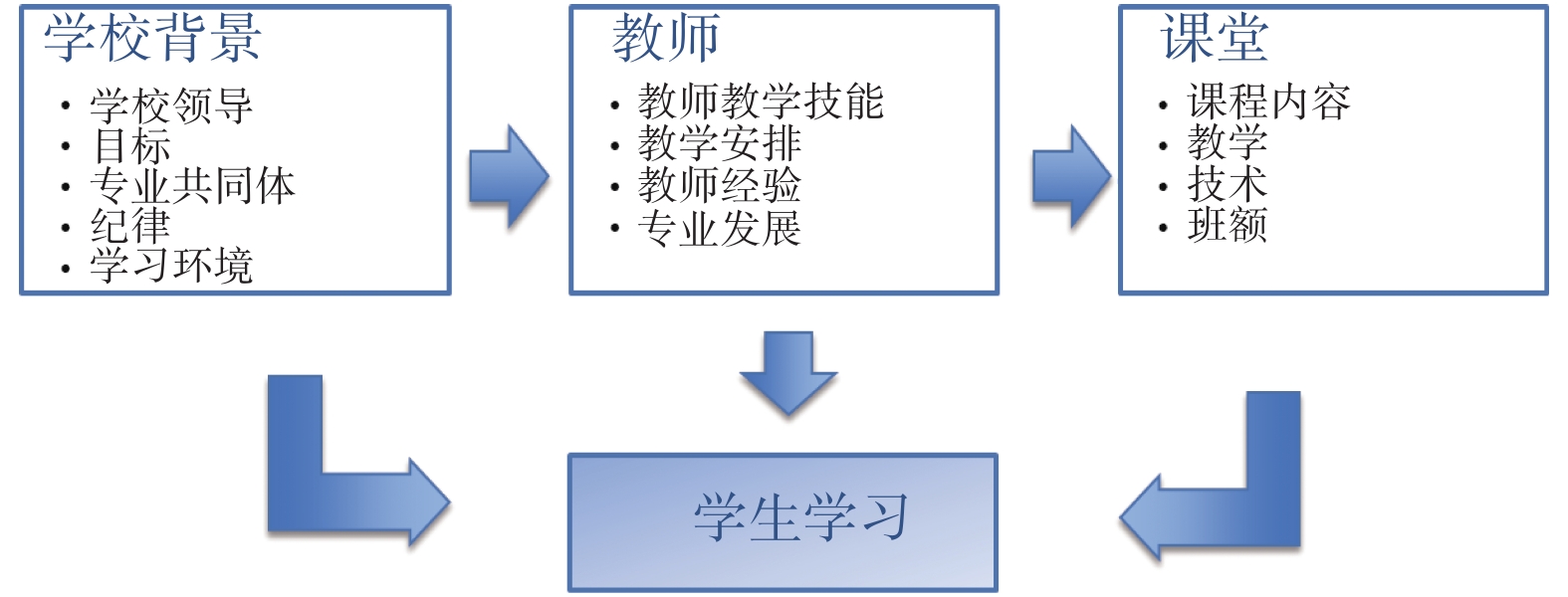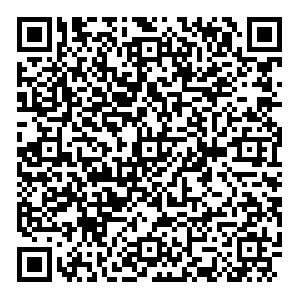The Definition of Quality of Basic Education and the Theoretical Model for Quality Monitoring and Evaluation
-
摘要: 对基础教育质量内涵的理解需从形成规定性定义或纲领性定义转向给出描述性定义,包括:(1)教育质量的内涵是多要素、多层面的,需要建立起系统的教育质量观;(2)教育质量的核心是学生的发展;(3)学生的发展应当是全面的;(4)学生的发展是多因素作用的结果。基础教育质量监测评价的理论模型是对质量内涵的结构化呈现,其以CIPO(背景-输入-过程-产出)为框架,从学生发展角度对教育产出进行定义,并遴选关键影响因素,对教育质量的各层面各因素及其相互关系进行考察,最后从教育因素的作用这一视角表征教育质量。我国监测评价工作还需利用教育质量标准对基础教育质量进行明确定义,完善关键影响因素监测,加强对教育质量的追踪调查和实验研究,建构教育质量指数。Abstract: To understand the quality of basic education, people should develop its descriptive definition instead of a prescriptive or programmatic definition. First, the connotation of educational quality is multi-element, multi-faceted, and it is necessary to establish a systematic view about the quality of education. Second, the core of education quality is the quality of students' development. Third, students’ development should be all-round. Finally, the quality of student development is the result of multiple factors. The theoretical model of basic education quality monitoring and evaluation is a structured presentation of the connotation. It employs CIPO (Context-Input-Process-Output) as the framework, defines educational output from the perspective of students’ development, selects key influencing factors to investigate the various aspects of the quality of education and their relationship, and finally presents the effectiveness of educational factors as the quality of education. China needs to define the quality of basic education by standards, improve the monitoring of key influencing factors, strengthen the follow-up investigation and experimental research on the quality of basic education and construct indexes for the quality of basic education.
-
Key words:
- quality of basic education /
- connotation /
- monitoring and evaluation /
- theoretical model
-
表 1 关键影响因素的主题领域
背景:学生一般人口学因素;家庭社会经济地位;社会背景 输入 过程 学生 教育经历与能力基础 学习策略;学习时间;非认知因素 班级 班级特征 学习机会;教师教学方式 学校 学校特征;办学经费与条件;学校规模与生师比 教师资质与专业发展;领导与管理;学校学习环境与氛围 区域 条件保障 教育政策执行 -
[1] 鲍尔. (2002). 教育改革——批判和后结构主义的视角(侯定凯译). 上海: 华东师范大学出版社. [2] 陈科武. (2016). PISA2012背后的问卷技术—基于跨文化可比性视角. 上海教育科研,(03),35—38,49. [3] 陈玉琨. (1999). 教育评价学. 北京: 人民教育出版社. [4] 程凤春, 卫喆. (2012). 再论教育质量及其衡量标准—基于ISO9000族标准的分析. 教育研究,(6),56—60. [5] 褚宏启. (2020). 新时代需要什么样的教育公平:研究问题域与政策工具箱. 教育研究,41(02),4—16. [6] 达尔伯格, 莫斯, 彭斯. (2006). 超越早期教育保育质量——后现代视角(朱家雄, 王峥译). 上海: 华东师范大学出版社. [7] 范国睿. (2020). 教育评价改革需要新路向. 中国教育报, 2020-07-20(002). [8] 郭思文, 李凌艳. (2012). 影响学生学习素养的环境因素测评:PISA的框架、内容及政策影响. 比较教育研究,(12),86—90. [9] 侯杰泰. (2016). 不合理的教育质量监测: 我们能通过反复过秤来催肥吗?. 文汇报, 2016−11−25(006). [10] 扈中平. (2005). “人的全面发展”内涵新析. 教育研究,(05),3—8. [11] 郏超超, 杨涛. (2019). TIMSS课程模型及测评框架的演变及启示. 外国中小学教育,318(6),25—32. [12] 教育大辞典编纂委员会. (1990). 教育大辞典(第一卷).上海: 上海教育出版社. [13] 经济合作与发展组织. (2019). 为了更好的学习: 教育评价的国际新视野 (窦卫霖等译). 上海: 上海教育出版社. [14] 哈蒂. (2015). 可见的学习——一项对800多项关于学业成就的元分析的综合报告(彭正梅等译). 北京: 教育科学出版社. [15] 胡森. (1987). 论教育质量(施良方译). 华东师范大学学报(教育科学版),(3),1—10. [16] 奇纳帕. (2012). 教育改革: 仍然在公平与质量之间权衡吗?(谷小燕译). 比较教育研究,(2),20—27. [17] 孙绵涛. (2007). 教育效能论. 北京: 人民教育出版社. [18] 王敏. (2000). 教育质量的内涵及衡量标准新探. 东北师大学报(哲学社会科学版),2,20—23. doi: 10.3969/j.issn.1001-6201.2000.02.004 [19] 王智超. (2011). 义务教育均衡发展与质量保障的现实思考. 东北师大学报(哲学社会科学版),(2),148—152. [20] 卫道治, 吕达. (2005). 英汉教育大词典. 北京: 人民教育出版社. [21] 温恒福, 温宏宇. (2020). 教育效能的本质、特征与改进方法论. 教育学报,16(2),66—74. [22] 谢富勒. (1994). 教育的语言(林逢祺译). 台北: 桂冠图书股份有限公司. [23] 辛涛, 姜宇, 王旭冉. (2018). 从教育机会到学习机会: 教育公平的微观视域. 清华大学教育研究(02), 18−24. [24] 辛涛. (2020). “探索增值评价”的几个关键问题. 中小学管理, (10), 首页. [25] 赵蒙成, 周川. (2000). 高等教育质量:概念与现实. 江苏高教,(2),32—35. [26] 赵茜, 张佳慧, 常颖昊. (2019). “国际学生评估项目2018”的结果审视与政策含义. 教育研究(12), 26−35. [27] 中华人民共和国教育部. (2019). 2018年国家义务教育质量监测数学学习质量监测结果报告. 取自中华人民共和国教育部网站: http://www.moe.gov.cn/jyb_xwfb/gzdt_gzdt/s5987/201911/W020191120537554536852.pdf. [28] Bronfenbrenner, U. (1994). Ecological models of human development. In P. Peterson, E. Baker, & B. McGaw (Eds.). International encyclopedia of education (Vol. 3, 2nd ed.). (pp. 37−43). Oxford: Elsevier. [29] Cairns, D., & Areepattamannil, S. (2019). Exploring the relations of inquiry-based teaching to science achievement and dispositions in 54 countries. Research in Science Education, 49(1), 1—23. doi: 10.1007/s11165-017-9639-x [30] Carnoy, M. (2009). Policy Research in Education: The Economic View. In G. Sykes, B. Schneider, & D. N. Plank (Eds.). Handbook of Education Policy Research (pp. 27−38). New York: Routledge. [31] Creemers, B. P. M., Kyriakides, L., & Antoniou, P. (2013). A dynamic approach to school improvement: main features and impact. School Leadership & Management, 33(2), 114—132. [32] Harvey, L., & Green, D. (1993). Defining quality. Assessment & Evaluation in Higher Education, 18(1), 9—26. [33] Heckman, J. J., Stixrud, J., & Urzua, S. (2006). The effects of cognitive and noncognitive abilities on labor market outcomes and social behavior. Journal of Labor Economics, 24(3), 411—482. doi: 10.1086/504455 [34] Leithwood, K., & Jantzi, D. (2006). Transformational school leadership for large-scale reform: Eeffects on students, teachers, and their classroom practices. School Effectiveness & School Improvement, 17(2), 201—227. [35] Mayer, D.P., Mullens, J.E., & Moore, M.T. (2001). Monitoring school quality: An indicators report. Washington, DC: National Center for Education Statistics. [36] O’Donnell, R. J., & White, G. P. (2005). Within the accountability era: Principals’ instructional leadership behaviors and student achievement. NASSP Bulletin, 89(645), 56—71. doi: 10.1177/019263650508964505 [37] OECD. (2001). Knowledge and skills for life: First results from the OECD Programme for International Student Assessment(PISA)2000. Pairs, OECD Publishing. [38] OECD. (2013). PISA 2012 assessment and analytical framework. Pairs, OECD Publishing. [39] OECD. (2017). PISA 2015 Results (Volume Ⅲ). Paris: OECD publishing. [40] OECD. (2019). PISA 2018 Assessment and Analytical Framework. Paris, OECD Publishing. [41] Schmidt, W. H., & Cogan, L. S. (1996). Development of the TIMSS Context questionnaires. In M. O. Martin, & D. L. Kelly. (Eds.). TIMSS technical report (Volume Ⅰ: Design and development)(pp. 5–22). MA: Boston College. [42] Schroeder, C. M., et al. (2007). A meta‐analysis of national research: Effects of teaching strategies on student achievement in science in the United States. Journal of Research in Science Teaching, 44(10), 1436—1460. doi: 10.1002/tea.20212 [43] Stensaker, B. (2007). Quality as a fashion: Exploring the translation of a management idea into higher education. In D. F. Westerheijden, B. Stensaker & M. J. Rosa (Eds.). Quality assurance in higher education: Trends in regulation, translation and transformation (pp. 99–118). Dordrecht: Springer. [44] Tovey, P. (1994). Quality assurance in continuing professional education. New York: Routledge Illustration, 1994. [45] Westerheijden, D.F., Stensaker, B., & Rosa, M.J. (2007). Introduction. In D. F. Westerheijden, B. Stensaker & M. J. Rosa (Eds.). Quality assurance in higher education: Trends in regulation, translation and transformation (pp. 1–11). Dordrecht: Springer. [46] Wittek, L., & Kvernbekk, T. (2011). On the problems of asking for a definition of quality in education. Scandinavian Journal of Educational Research, 55(6), 671—684. doi: 10.1080/00313831.2011.594618 -






 下载:
下载:

